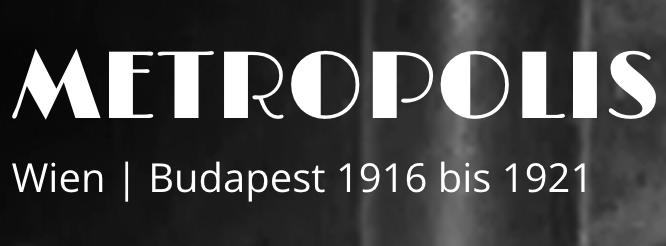Metropolis in Transition. Vienna | Budapest 1916–1921
Project Funding: Sparkling Science, SPA – 05/148
Project Duration: 01.11.2014–31.10.2016
Project Lead: Siegfried Mattl (LBIGG), bis 25.04.2015 / Ingo Zechner (LBIGG)
Project Advisory: Werner Michael Schwarz (Wien Museum)
Project Team (LBIGG): Sema Colpan (LBIGG), until 03.04.2016; Bernhard Hachleitner (LBIGG), since 04.04.2016; Katalin Teller (LBIGG); Marie-Noëlle Yazdanpanah (LBIGG; GWIKU 18 Haizingergasse)
Project Team (Schools): Réka Bártfay (Toldy-Ferenc-Gymnasium); Christina Eichler-Peña (GWIKU 18 Haizingergasse); Waltraud Huber (GWIKU 18 Haizingergasse); Walter Kieweg (GWIKU 18 Haizingergasse); Péter Molnár (Toldy-Ferenc-Gymnasium); Sarolta Tóth (Toldy-Ferenc-Gymnasium)
Project Partners: Ludwig Boltzmann Institute for History and Society (LBIGG); Vienna City Library; Budapest Collection; German Department of Eötvös Loránd University Budapest; GWIKU 18 Haizingergasse; Toldy-Ferenc-Gymnasium; Federal Center LITERACY:AHS; Wien Museum
The project conducted a comparative study of Vienna and Budapest during the transformation period from 1916 to 1921. The focus was on aspects of everyday life, gender, and youth cultural and their respective spaces. Employing the concept of the “spatial turn,” “Metropolis in Transition” examined selected “spatial stories” in both cities. The shift of the period under investigation to the years 1916 to 1921, as opposed to the established periodisation scheme of contemporary history, allowed for the analysis of changing urban functions both during the war and in its immediate aftermath. This included examining the changing techniques of power representation, the repurposing of entertainment venues, the spatial reconfiguration of neighborhoods due to migration movements, and the shift from the center towards the periphery caused by the erosion of the middle class.
“Metropolis in Transition. Vienna | Budapest 1916–1921” was a project under the bmwfw fundend “Sparkling Science” program, which focused on the involvement of pupils in research work in the sense of “Citizen Science”. In addition to the “space-in-between” research workshop at Eötvös Loránd University Budapest (26-27 June 2015), working with students was also at the core of the work program. In workshops and regular classes, theory and methodology for (pre-)scientific work steps and direct collaboration with scientists were tested. Organized in working groups, the students explored the specific urban spaces in Vienna and Budapest during their “city walks.” These steps formed the basis for their presentations at the respective locations, which would conclude the students’ work on this project in 2016. Simultaneously, texts and images were published on the project website in the student blog, as well as scientific articles on theoretical questions, the project’s progress, and specific transitory spaces.






